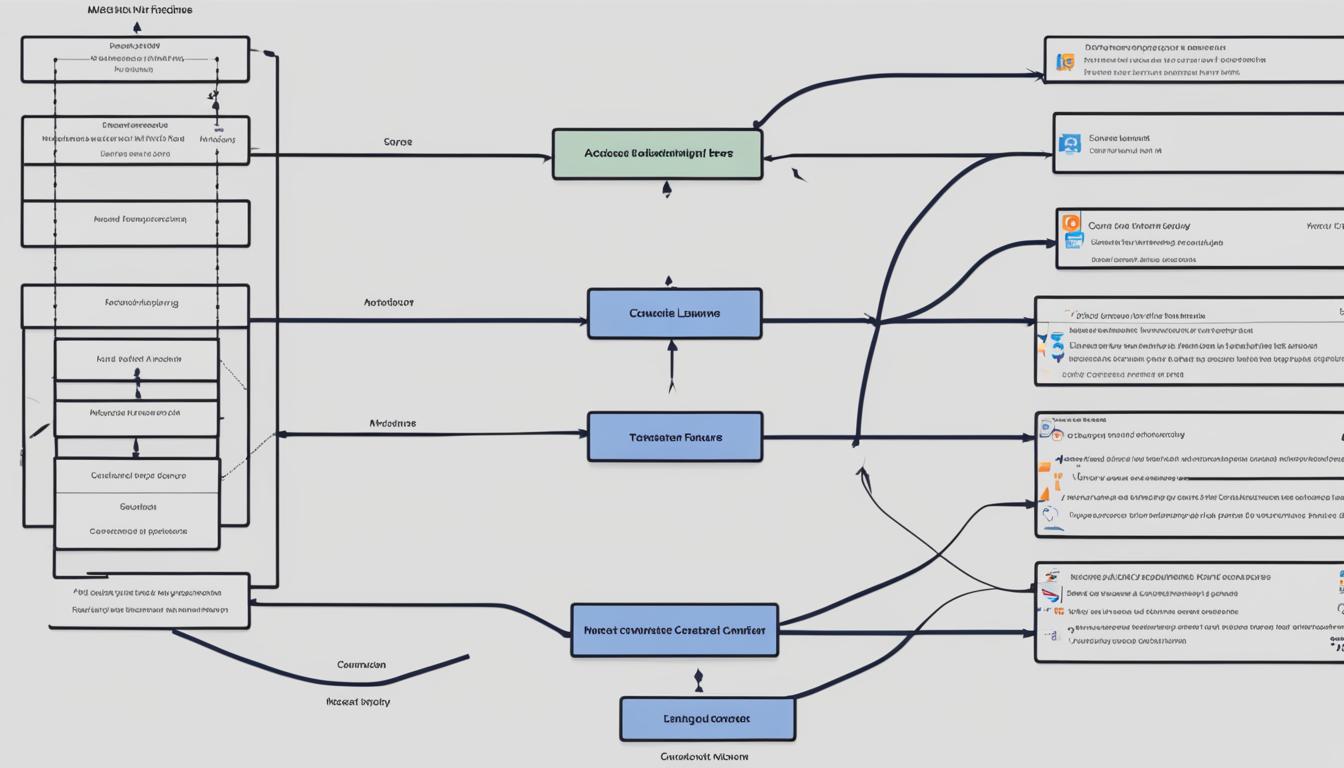Welcome to the world of machine learning! In this introductory article, we will explore the fundamentals of decision trees and their role in machine learning. Understanding machine learning basics, such as decision trees, is essential for anyone looking to delve into this exciting field.
A decision tree is a powerful tool used in decision analysis and machine learning. It employs a tree-like structure to represent decisions and their potential outcomes. Decision trees are commonly utilized in operations research and decision analysis to identify the most effective strategies for achieving specific goals.
One of the key advantages of decision trees is their simplicity and interpretability. They enable us to visualize complex decision-making processes in a flowchart-like manner. Each internal node represents a test on an attribute, each branch signifies the outcome of the test, and each leaf node represents a class label. These paths from the root to the leaf nodes form classification rules.
Decision trees excel at handling both numerical and categorical data, making them versatile for a wide range of classification tasks. They have the ability to handle missing data and can be used for multi-class classification. However, decision trees can be susceptible to overfitting and may lack stability.
There are various types of decision tree algorithms, including ID3, C4.5, and CART. These algorithms use different splitting criteria, such as information gain and Gini impurity, to identify the best attribute at each node. By selecting the most informative attributes, decision trees can effectively classify data and create accurate models.
Stay tuned for the next section, where we will dive deeper into how to choose the best attribute in a decision tree. By understanding the decision tree splitting criteria, we can enhance our understanding of the decision-making process in machine learning.
How to Choose the Best Attribute in a Decision Tree
The choice of the best attribute in a decision tree is crucial for the accuracy and effectiveness of the model. There are different methods to evaluate the quality of each attribute and select the optimal split point.
One widely used method is information gain, which measures the difference in entropy before and after a split. Entropy represents the impurity of the sample values, and the attribute with the smallest entropy is chosen as the best attribute.
Another popular splitting criterion is Gini impurity, which measures the probability of incorrect classification based on the class distribution of the dataset. The attribute with the lowest Gini impurity is considered the best attribute.
These methods help the decision tree algorithm in determining the most informative features for classification and regression tasks. By selecting attributes with high information gain or low Gini impurity, decision trees can effectively classify data and create accurate models.
Conclusion
Decision trees play a significant role in the field of machine learning, offering a range of advantages and considerations. With their simplicity and interpretability, decision trees are widely used to handle both numerical and categorical data, making them versatile tools in data analysis. They employ different splitting criteria, such as information gain and Gini impurity, to determine the best attribute at each node, enabling accurate classification and regression tasks.
However, it is important to be aware of the potential drawbacks of decision trees. They can be susceptible to overfitting and instability, particularly when constructing larger trees. To address these issues, pruning techniques and ensemble methods like random forests can be applied. Pruning allows for tree simplification, while ensemble methods aggregate multiple decision trees to enhance model performance and generalization.
In spite of their limitations, decision trees remain extensively utilized in various applications, including business decision mapping, data visualization, and knowledge visualization. Their inclusion in the machine learning toolbox is invaluable, providing valuable insights into data patterns and decision-making processes. By understanding the pros and cons of decision trees and considering appropriate techniques, practitioners can harness the power of decision trees to gain deeper understanding and make more informed decisions.
Source Links
- https://www.ibm.com/topics/decision-trees
- https://en.wikipedia.org/wiki/Decision_tree
- http://scikit-learn.org/stable/modules/tree.html
- Regulatory and Compliance: Pioneering the Future of Saudi Arabia’s Dedicated Cargo Airline - December 21, 2024
- Financial Strategies: Fueling the Growth of Saudi Arabia’s Dedicated Cargo Airline - December 20, 2024
- Operational Excellence: Ensuring Competitive Edge for Saudi Arabia’s Dedicated Cargo Airline - December 19, 2024






